Do Fly Fishing Jig Hooks Work Better and Other Thoughts on Euro Nymphing
Flies tied on jig hooks have unique characteristics that lead to better performance. Riding hook point up is not on our list as one of these.
by Chris N • January 21, 2023 in Fly Fishing Tips and Techniques
Opinions vary about Euro Nymphing and Jig Flies. While we don't have an axe to grind on the topic – we won't hesitate to use an indicator like the new classic red-and-white bobber look-a-like from Oros and we are quick to rig a dry-dropper any time of the year – we will say that it seems like we catch more fish when Euro Nymphing with Jig Flies.
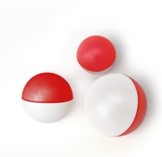 | 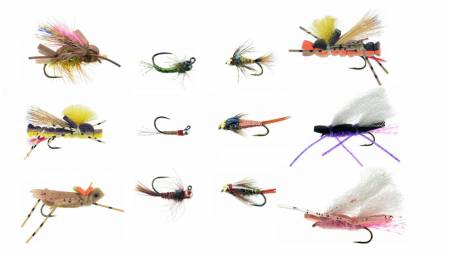 |
And, while it is never (ever, ever, ever?) about the numbers, on most days we like to catch more fish rather than fewer. We think that makes us like 99.99999% of all anglers. Maybe the punchline here is that we aren’t very good bobber fisherman, but we digress.
So, why do we think Euro Nymphing works? Are the jig hooks commonly associated with Euro Nymphing at the root of the success?
Commonly stated advantages of jig hooks include:
- Less snagging because jig hooks ride hook point up,
- Better hook penetration and hooking ability because of the competition hook design, and
- Modular design…that in conjunction with slotted tungsten beads, jig hooks allow for more weight options for a given hook size.
Jig Hooks - Hook Point Up?
We have long accepted the frequently stated notion that flies tied on jig hooks snag less often because they ride hook point up. We think there is some debate about this, however. While the debate around Euro Nymphing is mostly entertaining, here is the kind of banter that we find interesting and helpful (not that pure comedy isn't a worthy end most days)...there are several "studies" (here and here) that suggest ALL weighted nymphs actually ride hook point up.
Said more accurately, perhaps, is that nymphs weighted either by a bead or with built-in lead wraps ride vertically with the eye of the hook upright. This means that the hook point is always up, jig hook or otherwise. This makes sense to us because most of the hook’s steel, and weight, is in the bend of the hook. Sure, beads or built-in lead wraps act to help to pull the hook eye down so the overall fly is more horizontal, but the "hook point up" thing may not be so unique to jig hooks after all. What does seem to be unique about jig hooks with tungsten beads, however, is that they drift downstream bead first. We think it is likely that this Jerome Bettis bulldozer-like orientation keeps the hook somewhat protected from snags while the flies drift in the target zone. We think this is why we experience fewer snags.
Our understanding and experience of the "target zone" is worth mentioning in the context of snagging less. When we are Euro Nymphing, our goal is not to have our flies literally bouncing and pin-balling off rocks and the riverbed structure. Sure, this will happen occasionally, but our understanding is that fish enjoy the protection and energy savings that come with hanging out in the lowest layer of water just above the riverbed that moves slower as a result of friction. A hydrologist might call this a zone of hydraulic cushion. The point is that the sweet spot for us is to have our flies in this zone (this also explains why a good cue that our flies are in the target zone is if the sighter is moving slower than the speed of the water on the surface). To the extent that rocks and other structure protrude the target zone, we think the bead-first-hook-protecting orientation helps reduce snags. But, we don't think the goal of "less snags" is driven by the ability of jig hooks to ride hook point up and thus pin-ball off rocks constantly throughout a drift and repeatedly cast after cast.
Better Hook Penetration & Hooking Ability of Jig Hooks
As for hook penetration, we do think the competition design of jig hooks helps. In general, a hook with a competition design refers to the following:
- A longer, sharper needle-like hook point, and
- A hook point that curves toward the eye of the hook to help overcome the lack of a barb.
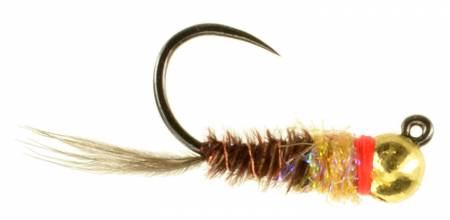 | 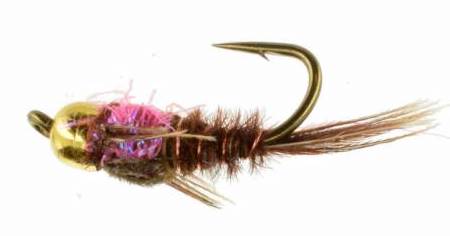 |
We don’t think these characteristics necessarily need to be unique to jig hooks. We have seen an increase in the number of non-jig hooks that are being designed with these characteristics, like the Dohiku hooks pictured below. While we’re likely to see more and more of this trend, we do think that these hook characteristics are largely, and almost exclusively, associated with jig hooks in today’s market.
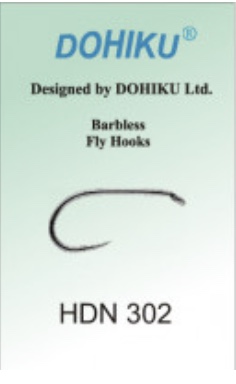 | 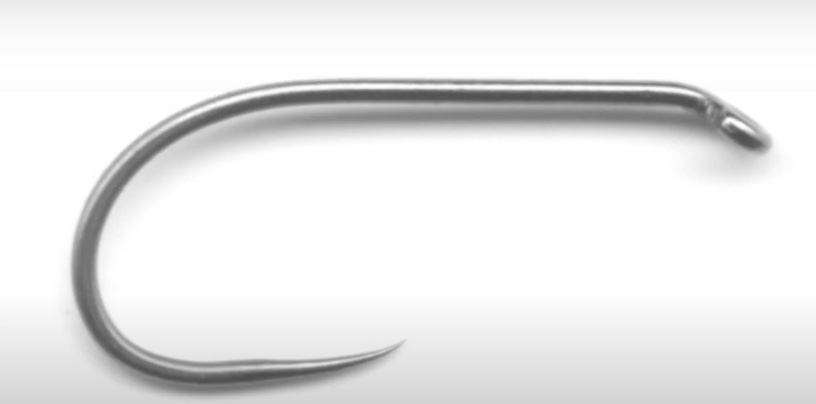 |
On the topic of increased hooking ability, our experience is that we hook over 90% of the fish we catch while Euro Nymphing in the upper lip or the corner pocket of the fish’s mouth. This is another oft-stated benefit of jig hooks riding hook point up. We think these hooking results are a result of sharper, better penetrating hooks and far better strike detection (more on this below) rather than a "hook point up" orientation.
Modular Design of Jig Hook Flies
Another advantage of jig hooks in our experience is that a given hook size can be paired with numerous bead sizes. For example, a size 16 Frenchie tied on a jig hook can have either a 2.8mm bead or a 3.3mm bead. The same size 16 could also have a 2.3mm bead or a 3.5mm bead. While this flexibility and modularity isn’t impossible with traditional beads and hooks, we do think it is much easier to vary bead sizes with jig hooks. Perhaps more important, it is also more common among fly designers who tie jig flies to vary the bead size for the same size fly. We think being at the right depth accounts for more fish than having the “right” fly, so the design focus on delivering a given size fly at different depths is an advantage of jig hooks. We also think slotted tungsten beads are heavier than traditional countersunk beads for a given bead size. This ultimately means that jig flies are likely deeper than non-jig flies of the same size. And, our experience is that flies are often fished too shallow rather than too deep.
Other thoughts on Jig Hook Fly Design
Beyond the benefits of jig hooks discussed above, we would remiss not to mention a few other thoughts on jig hook fly design. Assuming, as we do, that jig flies drift bead first, there seems to be little need to stress over what side of the shank to place the wingcase for flies like perdigons.
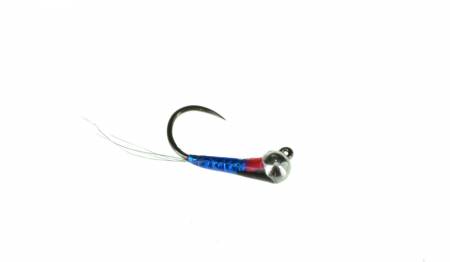
Our view is that unlike dry flies that are seen almost exclusively by fish from the underside, fish will eat tumbling nymphs regardless of orientation. This means that just as many nymphs are eaten wingcase first as belly first as tail first as head first. The exception, however, is that for jig flies with wingcases made from natural materials, we think the fly is more durable if the wingase is protected by the hook point. Back to discussion above about jig flies drifting bead first – we think it is better if epoxied wingcases, for example, don’t barrel into rocks wingcase first.
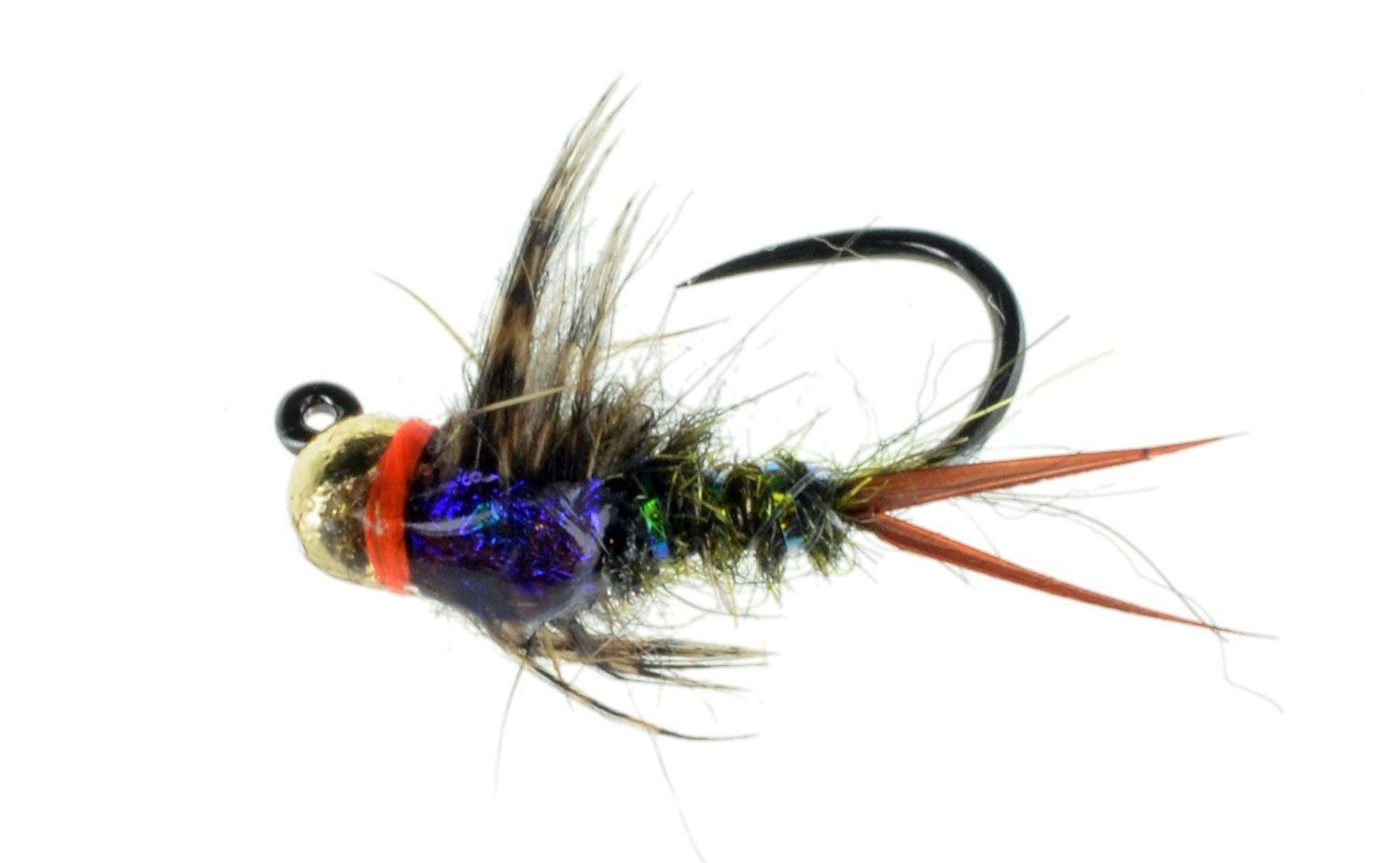 | 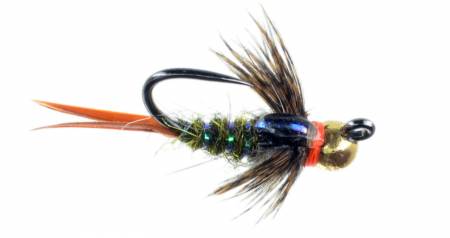 |
The Punchline
We do think that jig hooks have several unique characteristics that make them especially effective when used in a Euro Nymphing setup. We also think these characteristics make them great for fishing with a bobber or under a dry fly. We are less and less convinced, however, that the “hook point up” orientation is one of the benefits unique to jig flies and Euro Nymphing.
Here’s why we think Euro Nymphing has produced results for us
So, if it isn't the hooks riding hook point up what is it?
- We think that being in contact with our nymphs is THE thing that produces more fish for us when Euro Nymphing. This type of drift feels more natural to us and we think detecting strikes is meaningfully easier. We think that being in contact with our flies while fishing this way can be accomplished with non-jig hooks, but we prefer jig hooks for all the other reasons discussed here. We don’t actually think that we fool more fish while Euro Nymphing, we just think that we are better able to detect the few fish we do fool. This reminds us of when we were learning to fly fish. There is a book called Fly Fishing the South River by Roger Hill. We poured over this book when it came out in 1992, which was at the same time we started fishing and tying with obsession-like intensity. And, one of the things that Mr Hill suggests is replacing the use of an indicator with a hand-tied leader that has the knots painted orange. Yes, we did this using model paint and flex-a-ment. We don't think the orange knots necessarily led to a better drift; rather, the whole idea was better strike detection of the fish we were fooling. While there are many things that make Euro Nymphing different, a neon-colored piece of monofilament used as a “sighter” (and without a bobber) sure is reminiscent of orange knots. Just sayin…
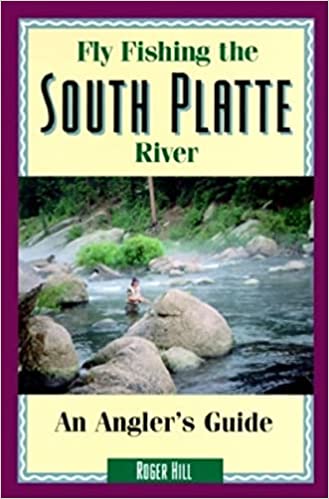 | 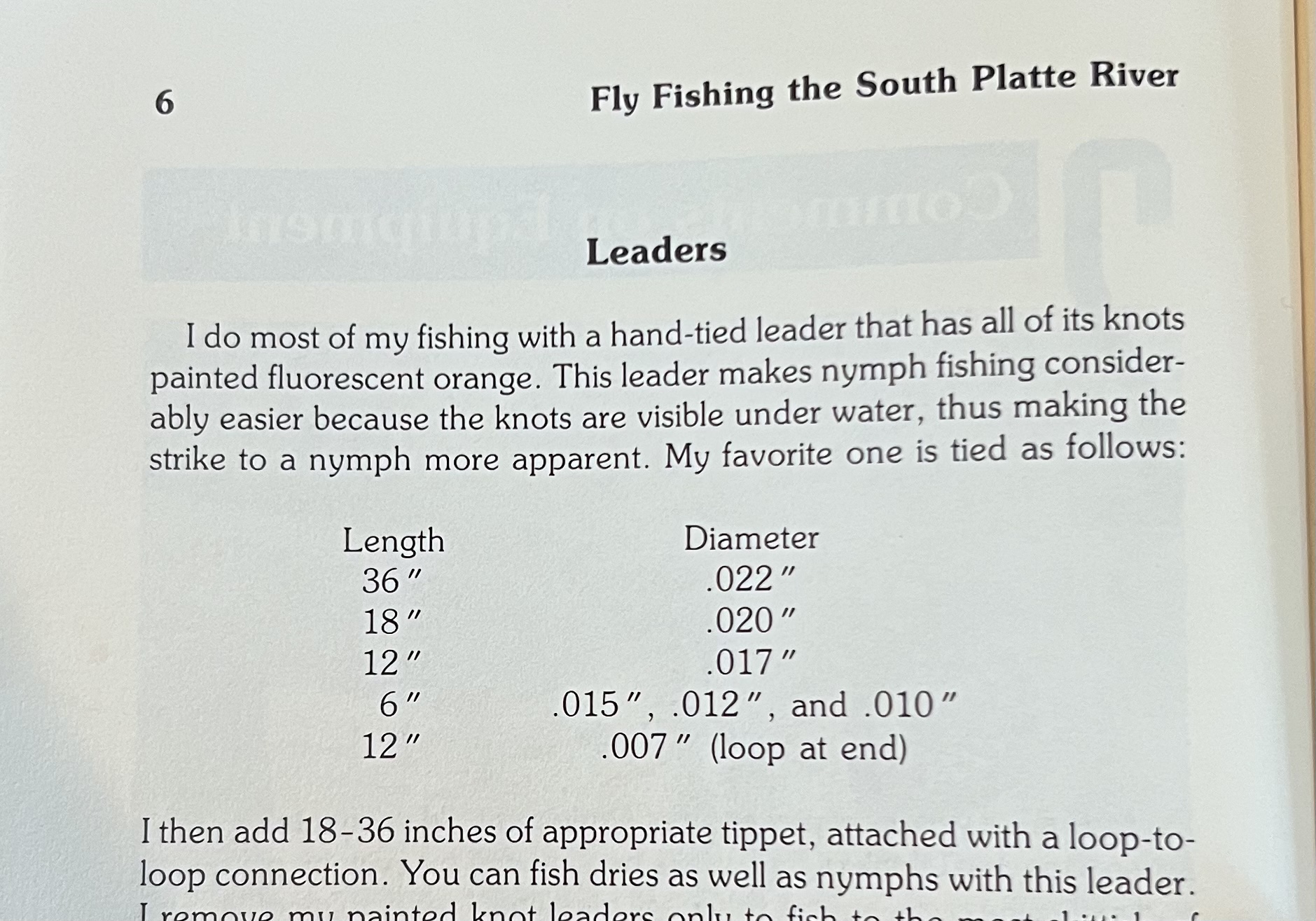 |
- We think that the rig set-up used for Euro Nymphing makes it easier to get flies to the correct depth as well as to adjust the depth quickly as conditions change. It isn’t that this can’t be accomplished with a bobber and split shot; we just find it easier to adjust depth using a Euro Nymphing rig.
- A close third is that a Euro Nymphing setup allows us to fish at least 50% more water while wade fishing. Our experience is that without a bobber we can fish runs and seams and across currents much more productively. This means that we fish water that we historically dismissed as “too tough to get a natural drift.” These “new” spots always seem to be good for a fish or two.
We think these three characteristics are more about the technique than the types of hooks the flies are tied on.
In summary, our experience suggests that:
- Flies tied on jig hooks have unique characteristics that lead to better performance. Riding hook point up is not on our list as one of these characteristics,
- Euro Nymphing has been a fun and effective new technique. While jig flies seem particularly well suited for this method, we think the method and associated techniques are likely more important than the type of hooks the flies are tied on, and
- Given a choice, we will reach for a jig version of a nymph rather than a traditional bead head regardless of the nymphing technique we are using. That said, we still stock our fly boxes with all types of flies because it rarely – if ever – is just about the flies.

